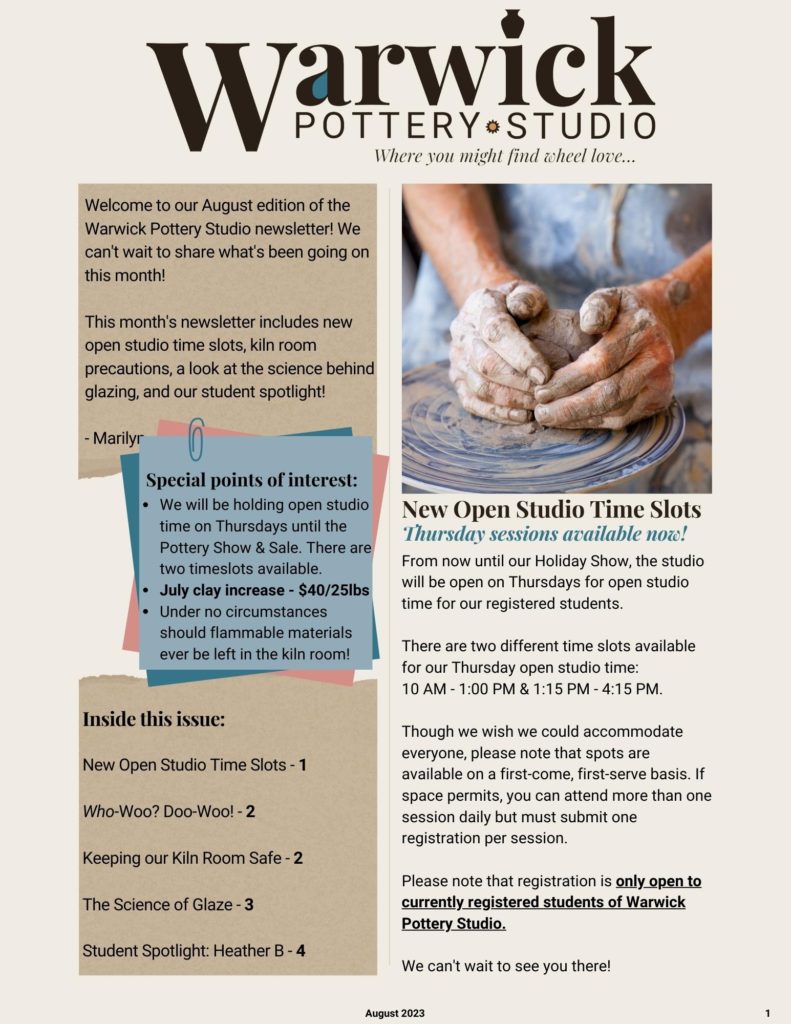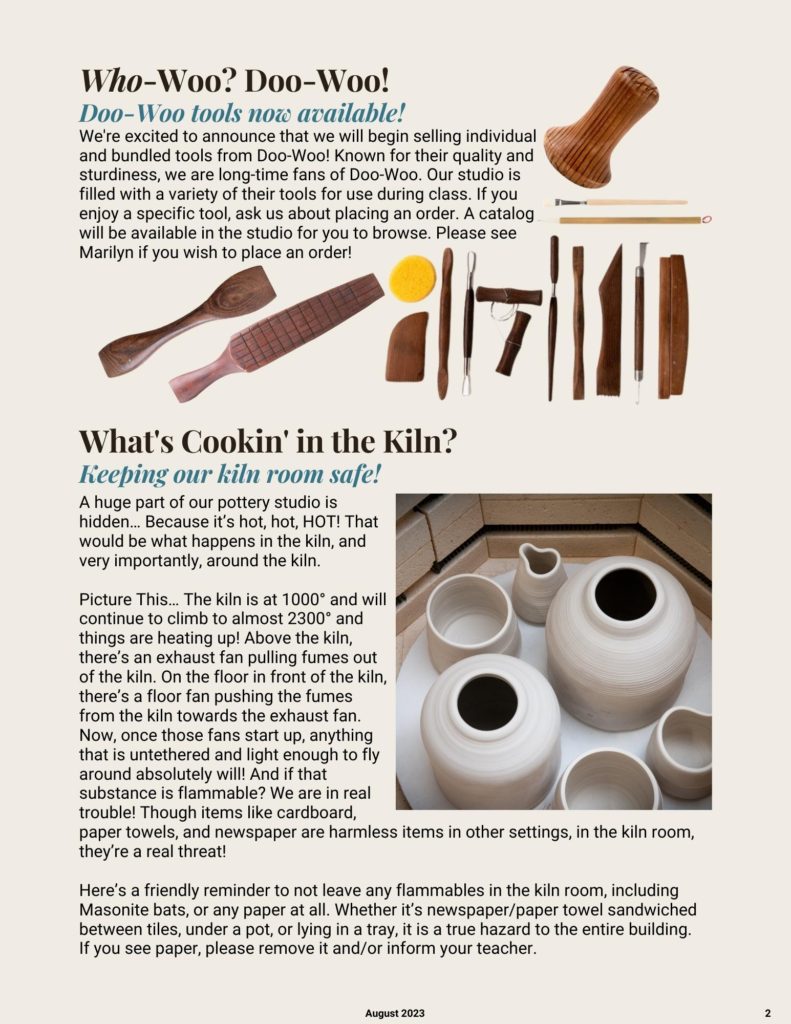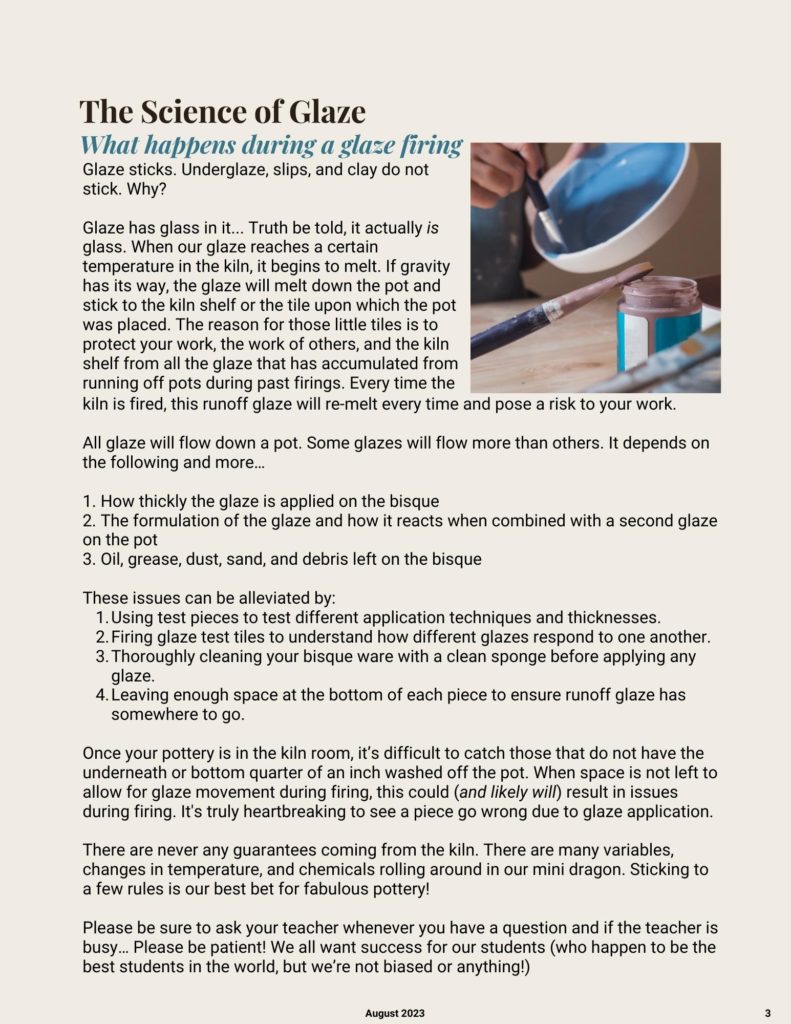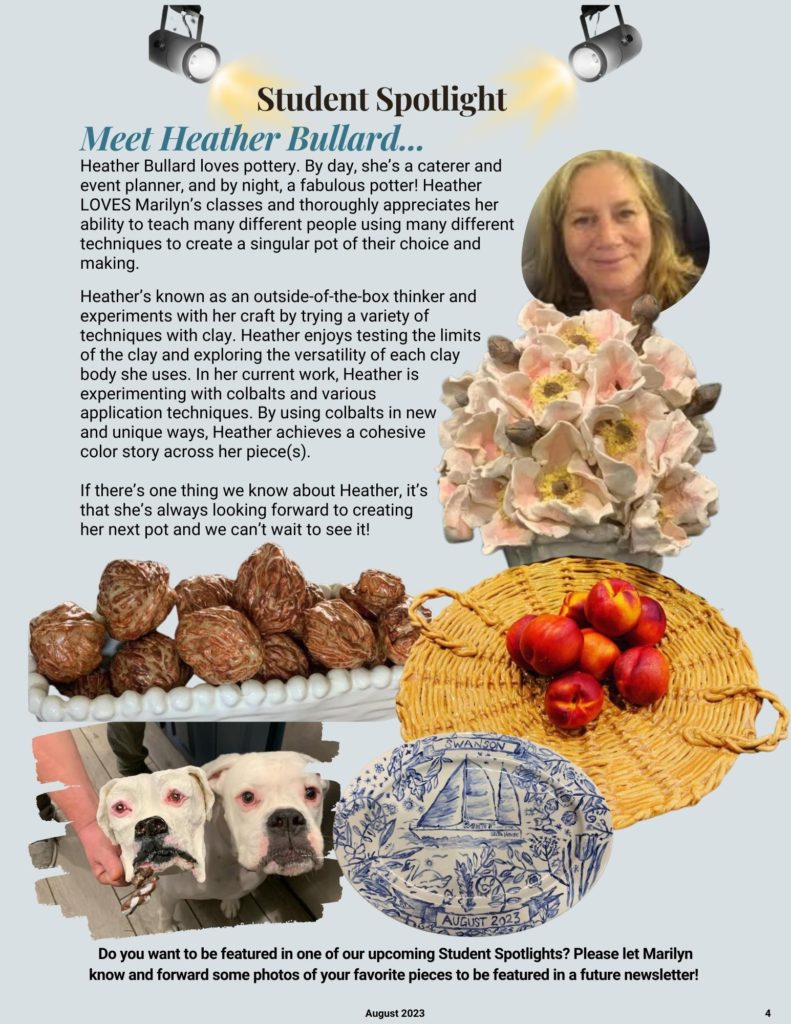Welcome to another edition of the Warwick Pottery Studio newsletter! How time flies! In this month’s edition, we discuss Doo-Woo Tools, Kiln Room Safety, the Science of Glaze, and our monthly student spotlight. Keep reading below to see what we’ve been up to this month.
– Marilyn




New Open Studio Time Slots
Thursday sessions available now!
Attention all students! From now until our Annual Holiday Show and Sale, the studio will be open on Thursdays for open studio time for our registered students. There are two different time slots available for our Thursday open studio time: 10 AM – 1:00 PM & 1:15 PM – 4:15 PM.
Though we wish we could accommodate everyone, please note that spots are available on a first-come, first-serve basis. If space permits, you can attend more than one session daily but must submit one registration per session. You can sign up for open studio time here. We can’t wait to see you there!
Please note that registration is only open to currently registered students of Warwick Pottery Studio.
Who-Woo? Doo-Woo!
Doo-Woo pottery tools are now available!
We’re excited to announce that we will begin selling individual and bundled tools from Doo Woo Potter’s Tools!
Known for their quality and sturdiness, we are long-time fans of Doo-Woo. Each tool is hand-crafted with great care, making each one a work of art in itself! Our studio is filled with a variety of tools for use during class. A catalog will be available in the studio for you to browse. If you enjoy a specific tool, or need a new set of tools, ask Marilyn about placing an order. Our personal favorites include the throwing stick, wooden knives, and wires!
What’s Cookin’ in the Kiln?
Keeping our kiln room safe!
A huge part of our pottery studio is hidden… Because it’s hot, hot, HOT! Which is exactly what happens in the kiln, and very importantly, around the kiln.
Picture this… The kiln is at 1000° and will continue to climb to almost 2300° and things are heating up! Above the kiln, there’s an exhaust fan pulling fumes out of the kiln. On the floor in front of the kiln, there’s a floor fan pushing the fumes from the kiln towards the exhaust fan.
Now, once these fans start up, anything that is untethered and light enough to fly around absolutely will! And if that substance is flammable? We are in real trouble! Though items like cardboard, paper towels, and newspaper are harmless items in other settings, in the kiln room, they’re a real threat!
Here’s a friendly reminder to not leave any flammables in the kiln room, including Masonite bats, or any paper. Whether it’s a newspaper/paper towel sandwiched between tiles, under a pot, or lying in a tray, it is a true hazard to the entire building. If you see paper, please remove it and inform your teacher.
The Science of Glaze
Glaze sticks. Underglaze, slips, and clay do not stick. Why is this?
Glaze has glass in it… Truth be told, it actually is glass. When our glaze reaches a certain temperature in the kiln, it begins to melt. If gravity has its way, the glaze will melt down the pot and stick to the kiln shelf or the tile upon which the pot was placed. The reason for those little kiln tiles is to protect your work, the work of others, and the kiln shelves from all the glaze that has accumulated from running off pots during past firings. Every time the kiln is fired, this runoff glaze will re-melt every time and pose a risk to your work.
All glaze will flow down a pot. Some glazes will flow more than others. It depends on the following and more…
- How thickly the glaze is applied on the bisque
- The formulation of the glaze and how it reacts when combined with a second glaze on the pot
- Oil, grease, dust, sand, and debris left on the bisque These issues can be alleviated by:
- Using test pieces to test different application techniques and thicknesses to understand your glazes and their behaviour.
- Firing glaze test tiles to understand how different glazes respond to one another.
- Thoroughly cleaning your bisque ware with a clean sponge before applying any glaze.
- Leaving enough space (1/4”) at the bottom of each piece to ensure runoff glaze has somewhere to go.
Once your pottery is in the kiln room, it’s difficult to catch those that do not have the underneath or bottom quarter of an inch washed off the pot. When space is not left to allow for glaze movement during firing, this could (and likely will) result in issues during firing. It’s truly heartbreaking to see a piece go wrong due to glaze application.
There are never any guarantees coming from the kiln. There are many variables, changes in temperature, and chemicals rolling around in our mini dragon. Sticking to a few rules is our best bet for fabulous pottery!
Please be sure to ask your teacher whenever you have a question and if the teacher is busy… Please be patient! We all want success for our students (who happen to be the best students in the world, but we’re not biased or anything!)
August Student Spotlight
Meet Heather Bullard…
Heather Bullard loves pottery. By day, she’s a caterer and event planner, and by night, a fabulous potter! Heather LOVES Marilyn’s classes and thoroughly appreciates her ability to teach many different people using many different techniques to create a singular pot of their choice and making.
Heather’s known as an outside-of-the-box thinker and experiments with her craft by trying a variety of techniques with clay. She enjoys testing the limits of the clay and exploring the versatility of each clay body she uses. In her current work, Heather is experimenting with colbalts and various application techniques. By using colbalts in new and unique ways, Heather achieves a cohesive color story across her work.
If there’s one thing we know about Heather, it’s that she’s always looking forward to creating her next pot and we can’t wait to see it!
Do you want to be featured in one of our upcoming Student Spotlights? Please let Marilyn know and forward some photos of your favorite pieces to be featured in a future newsletter!